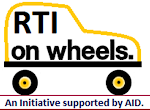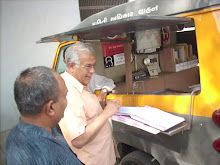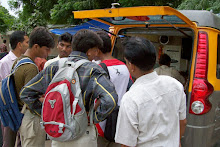The Hindu: Opinion: Wednesday,
15 January 2025.
The amendment to Rule 93(2) of the Conduct of Election Rules, 1961, to restrict public access to election-related records, has no place in a democracy
Last year, presiding officer Anil Masih was caught on CCTV camera manipulating votes in the Chandigarh mayor elections to help the Bharatiya Janata Party (BJP) secure victory. The incident underlined the importance of infusing transparency in the electoral process to detect and prevent election fraud. It is ironic then that even before the year ended, the Central government brought an amendment to Rule 93(2) of the Conduct of Election Rules, 1961, to restrict public access to election-related records.
The amendment came days after the Punjab and Haryana High Court directed the Election Commission of India (ECI) to provide information under Rule 93(2) of the Conduct of Election Rules. Copies of Form 17C and CCTV footage of the Assembly elections in Haryana were among the records sought by the petitioner.
Rule 93 of the Conduct of Election Rules provides a framework for people to obtain information related to elections. Rule 93(2) originally stated that other than the records specifically exempt under Rule 93(1), all papers relating to elections shall be available for people to inspect and take copies of. The amendment to Rule 93(2) narrows the scope of people’s right to information by adding a qualification that only “papers as specified in these rules relating to the election shall be open to public inspection”. Records related to the electoral process, including Form 17C, video recordings and CCTV footage, will potentially get caught in the cross hairs of the new amendment.
Delays that led to doubts
The role of the ECI in the matter is particularly disconcerting. One of the safeguards in the Representation of the People Act, 1951, to prevent the ruling party from arbitrarily misusing its power to frame rules is that the rules can be made only “after consulting the Election Commission”. It is baffling why the institution vested with the responsibility of ensuring free and fair elections is opposed to transparency, especially at a time when serious questions have been raised about the sanctity of the electoral process.
In the general elections of 2024, the ECI did not put out voter turnout figures in absolute numbers after the completion of voting in the initial phases. This, coupled with an unusually high revision of 6% in voter turnout in some phases of the election, without any explanation, prompted a public demand for disclosure of Form 17C. Part I of this Form is filled by the Presiding Officer of each polling station at the close of voting and is submitted to the Returning Officer of the constituency. It contains information on the voter turnout and the number of votes recorded in the Electronic Voting Machine (EVM). Part II is filled on the day of counting by noting the votes secured by each candidate as recorded in the EVMs. The documents reveal whether or not voter turnout tallies with the votes polled and counted.
Several political parties also sought copies of Form 17C after the general elections, claiming an abnormally large increase in voter turnout between the figures declared by the ECI at the close of polls on the day of voting and the final turnout declared a few days later. For instance, an ally of the BJP, the Biju Janata Dal (BJD), claimed a massive increase between the two figures in some constituencies in Odisha, raising doubts about the integrity of the election process. In the Assembly elections held in Haryana and Maharashtra, similar concerns were raised and applications were again filed seeking copies of Form 17C and other election records.
Refusal to disclose information
Unfortunately, all these requests were stonewalled by the ECI. In a petition to the ECI, the BJD complained that even its candidates were denied copies of Form 17C, despite making requests under the Representation of the People Act and the Right to Information Act, 2005.
Further, when the matter of proactive disclosure of Form 17C was agitated in the Supreme Court, the ECI opposed it on the specious grounds that there is no legal mandate to share Form 17C with anyone other than the candidates and political parties through their designated polling agents. In fact, it claimed that there is a “one-to-one relationship between each Form 17C and its possessor” and its unrestricted disclosure is amendable to mischief as people may morph the images. Further, it argued that there is no technical facility to scan the documents.
The ECI’s reluctance to share copies of Form 17C is inexplicable. Copies of Part 1 of Form 17C are given to polling agents who are present at the booth and there is no prohibition on their further dissemination. In Digital India, the claim that Returning Officers don’t have the technical facility to scan and upload a couple of thousand pages is scarcely credible.
On December 26, 2024, more than six months after the general elections, the ECI released a set of 42 statistical reports terming it a “Treasure Trove for stakeholders including academicians, researchers, election watchers worldwide”. This too had no data from Form 17C, which would conclusively resolve the vexed issue of difference between votes polled and counted.
Transparency is key to ensure public trust and participation in the electoral process. In 2024, the Supreme Court struck down the electoral bonds scheme as being violative of a voter’s fundamental right to information. A challenge to the new amendment has already reached the apex court. Rather than wait for the verdict of the judiciary, the ECI and the BJP would do well to realise that this amendment has no place in a democracy and withdraw it.
The amendment to Rule 93(2) of the Conduct of Election Rules, 1961, to restrict public access to election-related records, has no place in a democracy
Last year, presiding officer Anil Masih was caught on CCTV camera manipulating votes in the Chandigarh mayor elections to help the Bharatiya Janata Party (BJP) secure victory. The incident underlined the importance of infusing transparency in the electoral process to detect and prevent election fraud. It is ironic then that even before the year ended, the Central government brought an amendment to Rule 93(2) of the Conduct of Election Rules, 1961, to restrict public access to election-related records.
The amendment came days after the Punjab and Haryana High Court directed the Election Commission of India (ECI) to provide information under Rule 93(2) of the Conduct of Election Rules. Copies of Form 17C and CCTV footage of the Assembly elections in Haryana were among the records sought by the petitioner.
Rule 93 of the Conduct of Election Rules provides a framework for people to obtain information related to elections. Rule 93(2) originally stated that other than the records specifically exempt under Rule 93(1), all papers relating to elections shall be available for people to inspect and take copies of. The amendment to Rule 93(2) narrows the scope of people’s right to information by adding a qualification that only “papers as specified in these rules relating to the election shall be open to public inspection”. Records related to the electoral process, including Form 17C, video recordings and CCTV footage, will potentially get caught in the cross hairs of the new amendment.
Delays that led to doubts
The role of the ECI in the matter is particularly disconcerting. One of the safeguards in the Representation of the People Act, 1951, to prevent the ruling party from arbitrarily misusing its power to frame rules is that the rules can be made only “after consulting the Election Commission”. It is baffling why the institution vested with the responsibility of ensuring free and fair elections is opposed to transparency, especially at a time when serious questions have been raised about the sanctity of the electoral process.
In the general elections of 2024, the ECI did not put out voter turnout figures in absolute numbers after the completion of voting in the initial phases. This, coupled with an unusually high revision of 6% in voter turnout in some phases of the election, without any explanation, prompted a public demand for disclosure of Form 17C. Part I of this Form is filled by the Presiding Officer of each polling station at the close of voting and is submitted to the Returning Officer of the constituency. It contains information on the voter turnout and the number of votes recorded in the Electronic Voting Machine (EVM). Part II is filled on the day of counting by noting the votes secured by each candidate as recorded in the EVMs. The documents reveal whether or not voter turnout tallies with the votes polled and counted.
Several political parties also sought copies of Form 17C after the general elections, claiming an abnormally large increase in voter turnout between the figures declared by the ECI at the close of polls on the day of voting and the final turnout declared a few days later. For instance, an ally of the BJP, the Biju Janata Dal (BJD), claimed a massive increase between the two figures in some constituencies in Odisha, raising doubts about the integrity of the election process. In the Assembly elections held in Haryana and Maharashtra, similar concerns were raised and applications were again filed seeking copies of Form 17C and other election records.
Refusal to disclose information
Unfortunately, all these requests were stonewalled by the ECI. In a petition to the ECI, the BJD complained that even its candidates were denied copies of Form 17C, despite making requests under the Representation of the People Act and the Right to Information Act, 2005.
Further, when the matter of proactive disclosure of Form 17C was agitated in the Supreme Court, the ECI opposed it on the specious grounds that there is no legal mandate to share Form 17C with anyone other than the candidates and political parties through their designated polling agents. In fact, it claimed that there is a “one-to-one relationship between each Form 17C and its possessor” and its unrestricted disclosure is amendable to mischief as people may morph the images. Further, it argued that there is no technical facility to scan the documents.
The ECI’s reluctance to share copies of Form 17C is inexplicable. Copies of Part 1 of Form 17C are given to polling agents who are present at the booth and there is no prohibition on their further dissemination. In Digital India, the claim that Returning Officers don’t have the technical facility to scan and upload a couple of thousand pages is scarcely credible.
On December 26, 2024, more than six months after the general elections, the ECI released a set of 42 statistical reports terming it a “Treasure Trove for stakeholders including academicians, researchers, election watchers worldwide”. This too had no data from Form 17C, which would conclusively resolve the vexed issue of difference between votes polled and counted.
Transparency is key to ensure public trust and participation in the electoral process. In 2024, the Supreme Court struck down the electoral bonds scheme as being violative of a voter’s fundamental right to information. A challenge to the new amendment has already reached the apex court. Rather than wait for the verdict of the judiciary, the ECI and the BJP would do well to realise that this amendment has no place in a democracy and withdraw it.















































































